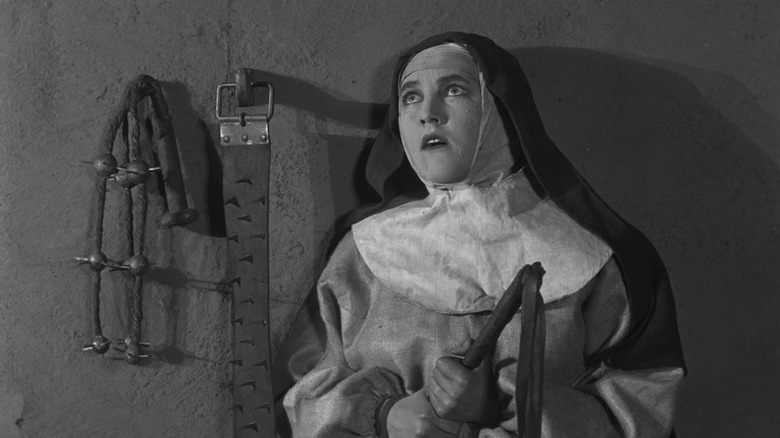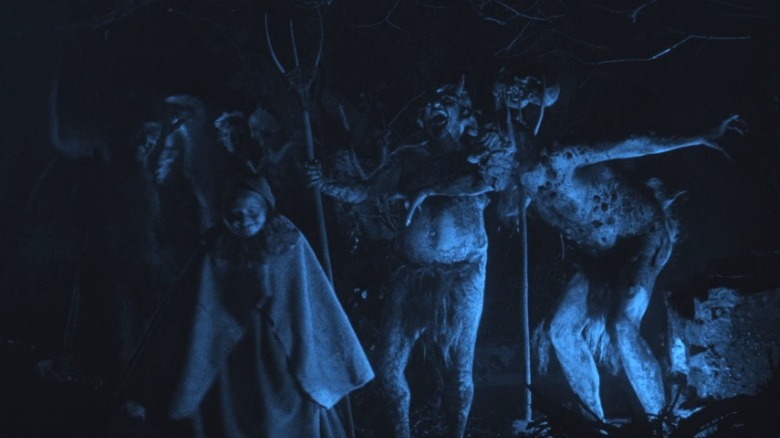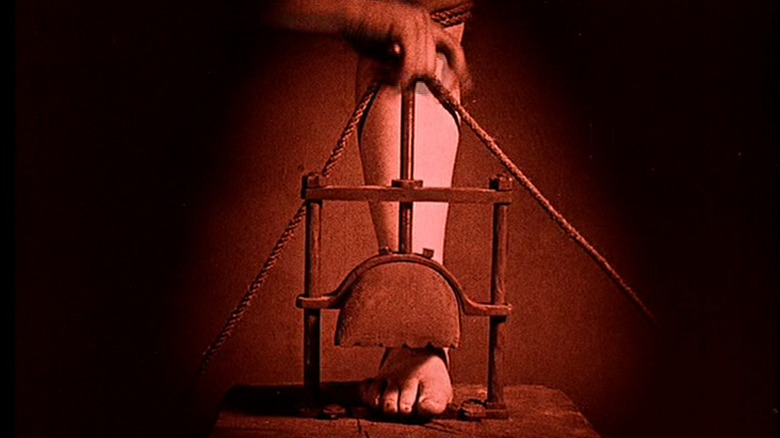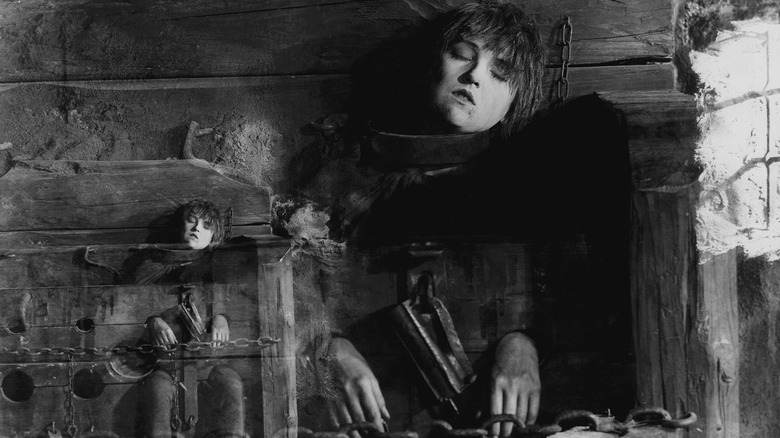The Daily Stream: Haxan Is A Subversive Film Way Ahead Of Its Time
The movie: "Häxan"
Where you can stream it: HBO Max, The Criterion Channel, Kanopy
The pitch: "Häxan" is a documentary about the history of witchcraft and people's beliefs in various superstitions that utilizes dramatic re-enactments to highlight the horrors inflicted upon "witches" throughout time and the silliness inherent in some of the anti-witchcraft beliefs throughout time. Created by director Benjamin Christensen, based upon his readings of the 15th-century German inquisitor handbook "Malleus Maleficarum," "Häxan" almost seems too wildly surreal and visually stunning to have been made more than a century ago. Sure, it's a silent film with some clear deterioration in the film stock itself and even the best remaster can't hide its age, but it's also just as freaky and funny as something you might see out of A24 in 2023.
The silent cinema of the 1920s is wildly varied, though most American audiences aren't as aware of the wonderfully weird surrealist films out of the rest of the world. There's a wealth of creepy cinema to be found, from German expressionism like "The Cabinet of Dr. Caligari" and "Nosferatu" to Spanish surrealism a'la Luis Buñuel like "Un Chien Andalou," but my favorite freaky flick of the era has to be "Häxan" because its witchy weirdness is subversively feminist and just the right mix of creepy, educational, and comical. Fritz Lang, eat your heart out.
Why it's essential viewing
I love movies that reveal just how much we have in common with the people of the past, and "Häxan" is a reminder that we've always been filthy, freaky weirdos. There are a few different versions of the film available on streaming, including the original Swedish release and the 1968 American release with narration by author William S. Burroughs ("Naked Lunch"). The versions are fairly similar, with no dialogue and a series of "chapters" on witchcraft and its detractors that range from dry depictions of the information in the "Malleus Maleficarum" to re-enactments of various alleged witchy behaviors.
The re-enactments are by far the most fun thing in "Häxan," as people dressed as stereotypical witches consort with others dressed as devils or demons, dancing around bonfires and creating potions in cauldrons. It's really silly stuff that sort of points out how ridiculous medieval fears of witchcraft really were, and how they were used to keep women from having positions of power or control. (In the middle ages, many traditional healers were typically women, but the church began outlawing folk medicine and declaring these women as witches in order to maintain church doctrine!) "Häxan" is slyly feminist, never outright saying that the persecution of "witches" was a terrible thing, but it instead is something of a satire of the very topic it claims to be about. The early chapters are sort of like if "Reefer Madness" had been that obscenely goofy on purpose, though there are parts of "Häxan" that are no laughing matter.
The horrors of history
While all of the sequences that depict devil worship are a lot of fun, unfortunately, scenes of women kissing the buttocks of a furry man with a tail are soon replaced with instances of witch trials throughout history. First, we see what happens as women are rounded up and questioned about their "witchy" activities, and it's no surprise that many of them give up the names of "other witches" in order to try and lessen their own punishment. "Häxan" doesn't directly say that these supposed witches confessed to crimes they never committed because they were being tortured, but it does suggest it pretty explicitly.
After all of the fun of witch orgies and devil dancing, we sadly see a number of young women tortured because someone in the village thinks they are a witch. An interstitial title screen explains that somewhere around 8,000 men, women, and children were executed for witchcraft, but an essayist for the Criterion Collection estimates that the number is closer to 10 times that. (Britannica puts the number somewhere between 40-60,000.)
These fictionalized scenes are followed up with a lesson on the torture implements used to get confessions out of witches, with some live demonstrations on willing participants. While none of the torture implements are ever used to their full potential and no one is seriously injured, it's still pretty awful seeing something like a thumbscrew used on a human being and knowing that they were used on so many others who couldn't get a reprieve when the director yelled "cut!".
A century-old plea for humanity
The final chapters of "Häxan" try to explain what might have led to some of the superstitious beliefs of the past. Examples of people with mental or neurological disorders are given as potential reasons to suspect "witchcraft," including a sleepwalker whose symptoms mirrored a nun who had allegedly desecrated a holy site while in a sleep-walking state. An attempt at explaining how "supernatural" occurrences were really just symptoms of disorders that we didn't yet understand is oddly reassuring after all of the awfulness of the witch trial and torture segments, because it offers a bit of hope that we won't repeat the same mistakes.
While we may no longer be burning people at the stake for assumed crimes against decency, we're really not all that far removed from it and could slip easily into regressive, dangerous beliefs. Women went from being accused of witchcraft in the middle ages to being locked up for hysteria in the early 20th century, and though there have been major steps forward to take us away from the horrors of witch trials, there have also been some terrifying steps backward.
"Häxan" might be 101 years old, but it's as relevant as ever and is a funny, creepy, and heartbreaking reminder of the wild beliefs people can create about one another out of fear and a need for control. Check it out — you might learn something, and even if you don't, you'll get a chance to laugh at all of the devil butts.



